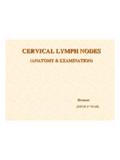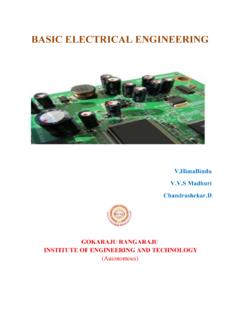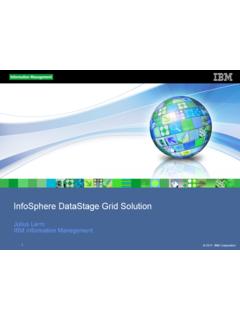Transcription of SAS Enterprise Miner 14.1 Extension Nodes: Developer’s Guide
1 SAS Enterprise Miner . Extension Nodes: developer 's Guide SAS Documentation The correct bibliographic citation for this manual is as follows: SAS Institute Inc. 2015. SAS Enterprise Miner Extension Nodes: developer 's Guide . Cary, NC: SAS Institute Inc. SAS Enterprise Miner Extension Nodes: developer 's Guide Copyright 2015, SAS Institute Inc., Cary, NC, USA. All rights reserved. Produced in the United States of America. For a hard-copy book: No part of this publication may be reproduced, stored in a retrieval system, or transmitted, in any form or by any means, electronic, mechanical, photocopying, or otherwise, without the prior written permission of the publisher, SAS Institute Inc. For a web download or e-book: Your use of this publication shall be governed by the terms established by the vendor at the time you acquire this publication. The scanning, uploading, and distribution of this book via the Internet or any other means without the permission of the publisher is illegal and punishable by law.
2 Please purchase only authorized electronic editions and do not participate in or encourage electronic piracy of copyrighted materials. Your support of others' rights is appreciated. Government License Rights; Restricted Rights: The Software and its documentation is commercial computer software developed at private expense and is provided with RESTRICTED RIGHTS to the United States Government. Use, duplication or disclosure of the Software by the United States Government is subject to the license terms of this Agreement pursuant to, as applicable, FAR , DFAR (a), DFAR. (a) and DFAR and, to the extent required under federal law, the minimum restricted rights as set out in FAR (DEC 2007). If FAR is applicable, this provision serves as notice under clause (c) thereof and no other notice is required to be affixed to the Software or documentation. The Government's rights in Software and documentation shall be only those set forth in this Agreement.
3 SAS Institute Inc., SAS Campus Drive, Cary, North Carolina 27513-2414. July 2015. SAS and all other SAS Institute Inc. product or service names are registered trademarks or trademarks of SAS Institute Inc. in the USA and other countries. indicates USA registration. Other brand and product names are trademarks of their respective companies. Contents Chapter 1 Overview of SAS Enterprise Miner Extension Nodes .. 1. Overview .. 1. Development Strategies for Extension Nodes .. 1. Accessibility Features of SAS Enterprise Miner .. 2. Chapter 2 Anatomy of an Extension Node .. 5. Overview .. 5. Icons .. 5. XML Property Files .. 6. XML Property File Elements .. 11. Chapter 3 Writing Server Code .. 33. Overview .. 33. Create Action .. 34. Train, Score, and Report Actions .. 36. Exceptions .. 37. Scoring Code .. 38. Modifying Metadata .. 39. Results .. 39. Model Nodes .. 40. Chapter 4 Extension Node Example.
4 45. Overview .. 45. Icons .. 45. XML Properties File .. 46. Server Code .. 48. Chapter 5 Deploying an Extension Node .. 57. Overview .. 57. Deploying to a Workstation Install .. 58. Deploying to a Client/Server Installation .. 58. Deploying Server Code to SAS Enterprise Miner .. 59. Batch Mode .. 59. Appendix 1 SAS Code Node Documentation .. 61. Appendix 2 Controls that Require Server Code .. 121. Overview .. 121. Table Editor Controls .. 122. Dialog Controls .. 138. The FileTransfer Control .. 142. Appendix 3 Predictive Modeling .. 145. Terminology .. 145. Common Features of Predictive Modeling Nodes .. 149. Differences among Predictive Modeling Nodes .. 153. Computer Resources .. 160. Prior Probabilities .. 162. Decisions .. 167. Decision Thresholds and Profit Charts .. 178. Detecting Rare Cases .. 183. iv Contents Generalization .. 189. Input and Output Data Sets .. 192. Combining Models.
5 200. Scoring New Data .. 201. References .. 201. Appendix 4 Allocating Libraries for SAS Enterprise Miner .. 203. Overview: Allocating Libraries .. 203. Allocate Libraries via a SAS Autoexec File .. 203. Allocate Libraries via Server Initialization Code .. 204. Allocate Libraries via Project Start Code .. 206. Allocate Libraries via SAS Management Console .. 206. ERROR: Data Set Does Not Exist .. 208. Appendix 5 Ext Demo Node Documentation .. 209. 1. Chapter 1. Overview of SAS Enterprise Miner Extension Nodes Overview .. 1. Development Strategies for Extension Nodes .. 1. Accessibility Features of SAS Enterprise Miner .. 2. Overview Extension nodes provide a mechanism for extending the functionality of a SAS. Enterprise Miner installation. Extension nodes can be developed to perform any essential data mining activity (that is, sample, explore, modify, model, or assess [SEMMA]). Although the SAS Enterprise Miner nodes that are distributed by SAS are typically designed to satisfy the needs of a diverse audience, Extension nodes provide a means to develop custom solutions.
6 Developing an Extension node is conceptually simple. An Extension node consists of the following: one or more SAS source code files stored in a SAS library or in external files that are accessible by the SAS Enterprise Miner server an XML file defining the properties of the node two graphic images stored as GIF files. When properly developed and deployed, an Extension node integrates into the SAS. Enterprise Miner workspace so that, from the perspective of the end user, it is indistinguishable from any other node in SAS Enterprise Miner . From a developer 's perspective, the only difference is the storage location of the files that define an Extension node's functionality and appearance. Any valid SAS language program statement can be used in the source code for an Extension node, so an Extension node's functionality is virtually unlimited. Development Strategies for Extension Nodes Although the anatomy of an Extension node is fairly simple, the fact that an Extension node must function within a SAS Enterprise Miner process flow diagram requires special consideration.
7 An Extension node's functionality typically allows for the 2 Chapter 1 Overview of SAS Enterprise Miner Extension Nodes possibility that the process flow diagram contains predecessor nodes and successor nodes. As a result, your Extension node typically includes code that is designed to capture and process information from predecessor nodes, and to prepare results to pass on to successor nodes. Also, the Extension node deployment process involves stopping and restarting the SAS. Enterprise Miner server. Because software development is inherently an iterative process, these features introduce obstacles to development that are not typically encountered in other environments. Fortunately, a solution is readily available: the SAS Enterprise Miner SAS Code node. The SAS Code node provides an ideal environment in which to develop and test your code. You can place a SAS Code node anywhere in a process flow diagram.
8 Using the SAS Code node's Code Editor, you can edit and submit code interactively while viewing the SAS log and output listings. You can run the process flow diagram path up to and including the SAS Code node and view the Results window without closing the programming interface. Predefined macros and macro variables are readily available to provide easy access to information from predecessor nodes. There are also predefined utility macros that can assist you in generating output for your Extension node. In short, you can develop and test your code using a SAS Code node without ever having to deploy your Extension node. As a corollary to using the SAS Code node, it is often helpful to code in small blocks. This makes it easier to identify and debug any errors in your code. For example, an unbalanced parenthesis in a macro statement can cause your Extension node to run indefinitely with no message printed to the log.
9 In this case, as your amount of code grows, so does the amount of time that you need to find the unbalanced parenthesis. The differences between a development and a run-time environment might not be obvious. For example, a user might develop macros in a 32-bit platform, but attempt to run them on a 64-bit platform. A more troublesome problem, though, is when Extension nodes are developed in UNIX or Linux and then deployed in Windows, or in the opposite direction. In this case, PROC CPORT and PROC CIMPORT should be used to move catalogs between different operating systems. After you have determined that your server code is robust, you need to develop and test the XML properties file. The XML properties file is used to populate the Extension node's Properties panel, which enables users to set program options for the node's SAS. program. Accessibility Features of SAS Enterprise Miner SAS Enterprise Miner includes accessibility and compatibility features that improve the usability of the product for users with disabilities.
10 These features are related to accessibility standards for electronic information technology adopted by the Government under Section 508 of the Rehabilitation Act of 1973, as amended. SAS. Enterprise Miner supports Section 508 standards except as noted in the following table. Accessibility Features of SAS Enterprise Miner 3. Section 508 Accessibility Criteria Support Status Explanation When software is designed to Supported with exceptions. The software supports run on a system that has a keyboard equivalents for all keyboard, product functions user actions with the shall be executable from a following exception: keyboard where the function The Explore action in the data itself or the result of source pop-up menu cannot performing a function can be be invoked directly from the discerned textually. keyboard, but you can use the Variable property in the Properties panel to invoke the data source explorer.
















